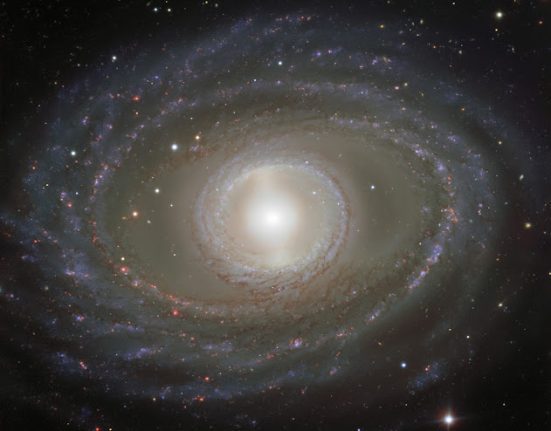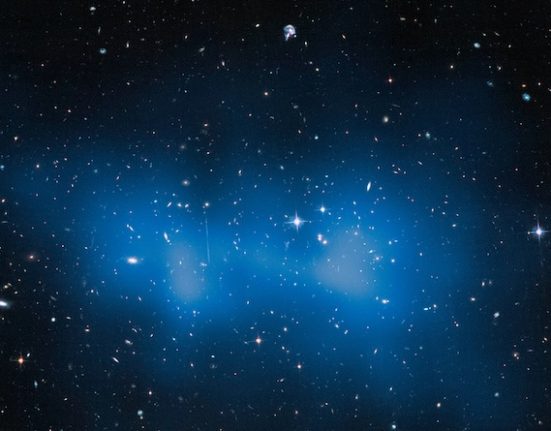A dark cloud of cosmic dust meanders across this spectacular wide-field image, illuminated by the bright light of new stars. This dense cloud is a star-forming region called Lupus 3, where dazzlingly hot stars are born from the collapse of masses of gas and dust. This image was created from images taken with the VLT Survey Telescope and the MPG/ESO 2.2 meter telescope and is the most detailed image yet taken of this region.
The Lupus 3 star-forming region is located within the constellation of Scorpio (The Scorpion), just 600 light years from Earth. It is part of a larger complex called Lupus Clouds, which takes its name from the adjacent constellation of Lupus (The Wolf). The clouds look like smoke billowing against a background of millions of stars, but they are actually a dark nebula.
Nebulae are large swaths of gas and dust that stretch between stars, sometimes stretching across hundreds of light years. While many nebulae are spectacularly illuminated by the intense radiation of hot stars, dark nebulae obscure the light from the celestial objects they contain. They are also known as absorption nebulae, because they are made up of cold, dense dust particles that absorb and scatter light as it passes through the cloud.
Famous dark nebulae include the Coalsack Nebula and the Great Rift, which are large enough to be seen with the naked eye, pitch black against the brightness of the Milky Way.
Lupus 3 has an irregular shape and looks like a deformed snake in the sky. This image is a region of contrasts, with thick dark trails contrasted with the glow of bright blue stars in the center. Like most dark nebulae, Lupus 3 is a region of active star formation, composed mainly of protostars and very young stars. Nearby perturbations can cause denser clumps of the nebula to contract under gravity, warming and pressurizing in the process. Eventually, a protostar is born from the extreme conditions at the core of this collapsing cloud.
The two bright stars in the center of this image underwent this same process. Early in their lives, the radiation they emitted was largely blocked by the thick veil of their host nebula, visible only to telescopes at infrared and radio wavelengths. But as they became hotter and brighter, their intense radiation and strong stellar winds cleared surrounding areas of gas and dust, allowing them to gloriously emerge from their gloomy nursery to shine brightly.
Understanding nebulae is essential to understanding star formation processes; In fact, the Sun is believed to have formed in a star-forming region very similar to Lupus 3 more than four billion years ago. As one of the closest stellar nurseries, Lupus 3 has been the subject of many studies; In 2013, the 2.2-metre MPG/ESO telescope at ESO's La Silla Observatory in Chile captured a smaller image of its dark smoke-like plumes and bright stars.
Image credit: ESO/R. Colombari
Explanation from: https://www.eso.org/public/news/eso1804/














Leave feedback about this